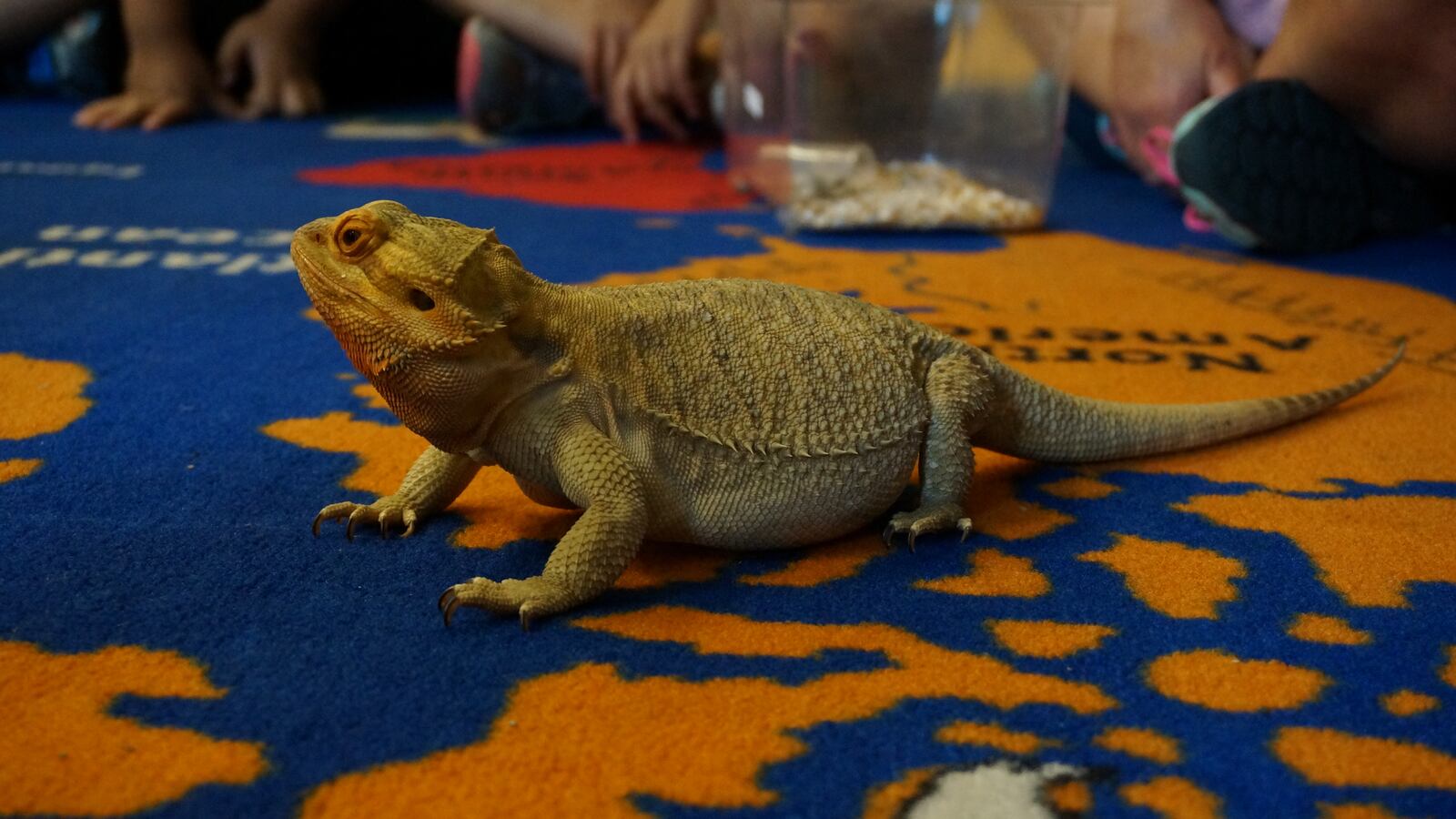It might not seem like there’s been a big change at Cold Spring School to the students who returned today for the first day of classes, but they actually will be part of a new and growing world of retooled schools.
This much stayed the same: Tucked into the hills on the northwest side of downtown Indianapolis, the school is surrounded by the same lush greenery as when students left in June. Many of the same teachers and kids are still there.
Even classroom lizards are back.
But Cold Spring quietly has gone through the sort of transformation that is remaking Indianapolis Public Schools.
This year, it is one of a handful of new “innovation” schools in IPS, which will gain many of the flexibilities of charter schools. Early district estimates suggest that this fall, just a year after the program launched, about 10 percent of IPS students will attend innovation schools — more than 3,000 kids.
Superintendent Lewis Ferebee, who helped spearhead the effort to create innovation schools, said the aim is to allow principals to have greater control because they are ones who are most familiar with the needs of students, families and neighborhoods.
“We are continuing to shift to give school leaders more agility to make decisions,” he said. “The element of autonomy is one that threads across all of our schools that we’re looking to be a feature of innovation.”
The growth of innovation schools is central to the vision district leaders have laid out for improving education in Indianapolis by increasing the power principals have and reducing the size of the central office. With such rapid expansion of the innovation schools, this year will be an important test of the model and the promises of improvement offered by district leaders.
The transition has been exhausting for Cold Spring Principal Carrie Scott-Bruns, who has spent the last several months learning the business side of running a school. But it’s also allowed the school to lengthen its day and build in time for daily meetings of science and engineering clubs.
“It’s a scary adventure,” she said.
At innovation schools, principals must take on administrative tasks, such as managing human resources, but they also have the flexibility to make lots of choices school leaders have long wanted to make, like how much of the day to spend on literacy or what teacher training program to use.
But innovation schools have become extremely controversial, in part because teachers at the schools are not represented by the IPS union. At Cold Spring and other schools that converted to innovation status, educators had to give up their union protections in order to stay on at the schools.
During the first year of the program, many innovation schools were simply charter schools that had been renting space from the district that agreed to officially come under IPS supervision.
But this year, the expansion will have a more dramatic effect as four traditional district schools make the switch.
School 93, which is using the district’s home-grown Project Restore turnaround model, is also making the transition to become an innovation school with the administrative help of the Phalen Leadership Academies charter school network. Schools 44 and 69, both long-struggling neighborhood schools, are being rebooted with new charter managers at the helm as Global Preparatory Academy and Kindezi Academy.
Ferebee said that one reason the district is moving toward innovation schools is because teachers in the district have told him that the central office bureaucracy makes it harder for them to do their jobs.
“We never want to be in a situation where we are perceived as the barrier,” Ferebee said. “We need to be perceived as those that are removing barriers, not creating them.”

